With step-by-step images and a video instruction, discover how to prepare sushi rice precisely every time.
All you need are simple ingredients such as rice vinegar, sugar, salt, and kombu. Once you master the secret of making the sushi rice, you will be ready to dish up all kinds of mouth-watering sushi recipes!
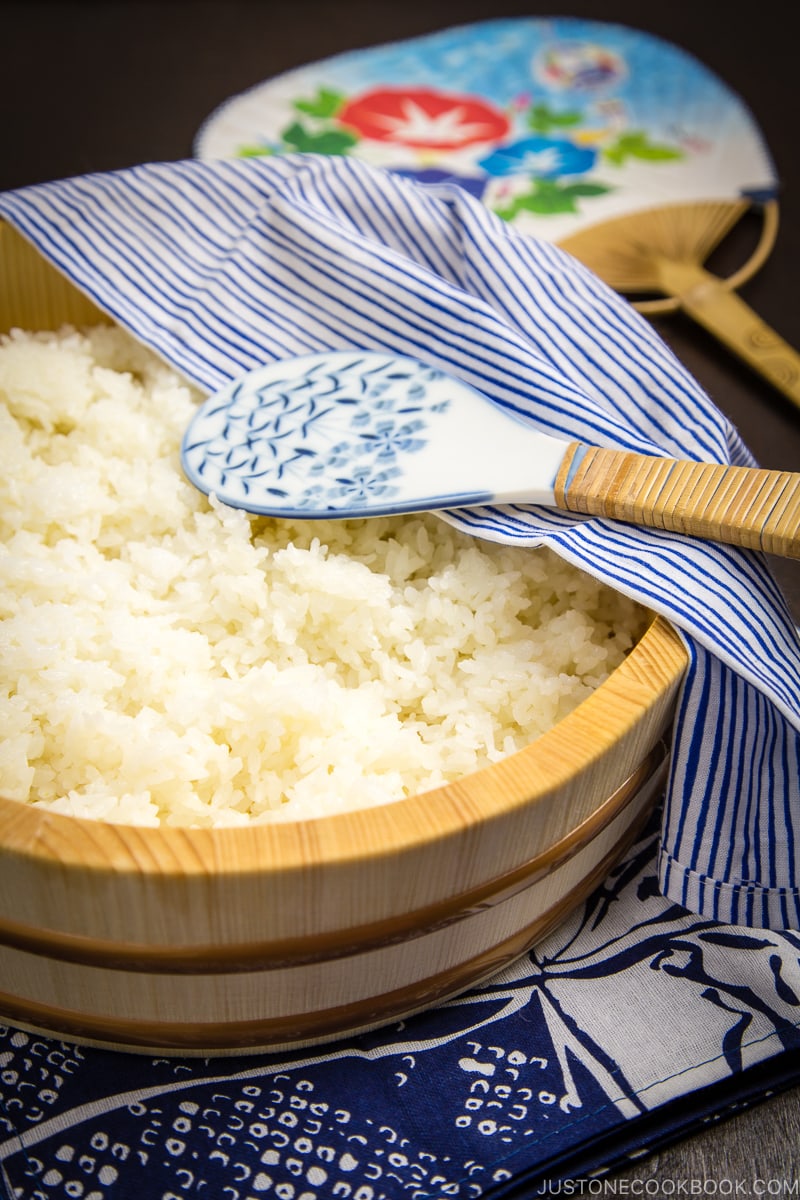
Perfectly cooked Sushi Rice (酢飯) is fundamental in making any form of sushi. Indeed, the best sushi restaurants in Japan pride themselves not only on the freshest fish or variety but on the technique and quality of the sushi rice. Here, I shared my secrets and techniques on how to make sushi rice the authentic way. Follow along, and you’ll be able to make the best sushi rice at home for all kinds of sushi!
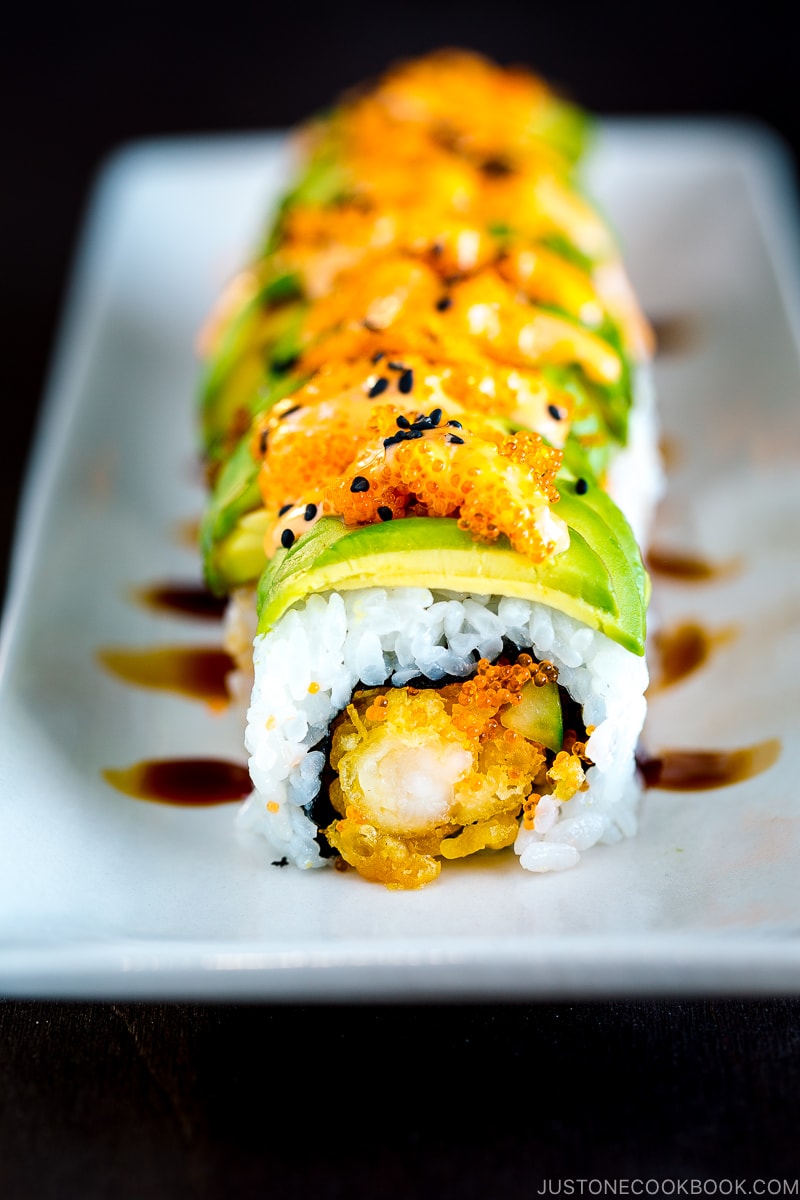
What is Sushi Rice?
Sushi rice is made by cooking Japanese short-grain rice, which is then seasoned with a mixture of rice vinegar, sugar, salt, and often with kombu (kelp). In Japanese, sushi rice is also known as sushi-meshi (鮨飯), su-meshi (酢飯), or shari (シャリ). We only use this vinegar-flavored rice when making all kinds of sushi.
However, it gets a little tricky because some rice companies outside of Japan label Japanese short-grain rice “sushi rice.” It creates confusion that the rice is strictly used just for sushi. In fact, we use the same rice for regular steamed rice or other rice dishes too.
If you are here looking for a recipe to make plain steamed rice, see my post on How to Make Rice. For sushi-making, you will need to cook Japanese short-grain rice and mix it with vinegar-based seasoning.
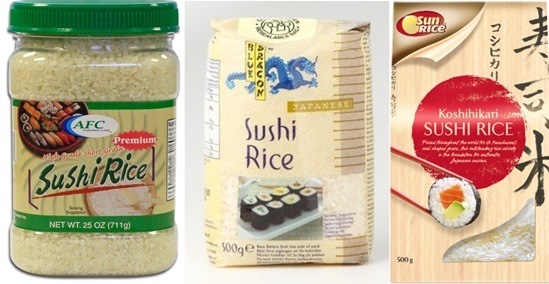
Where to Buy Japanese Short Grain Rice aka Sushi Rice?
You can find Japanese short-grain rice or commonly labeled as sushi rice in major grocery stores these days.
The standard, affordable brands include Kokuho Rose and Nishiki. For premium brands, I recommend Tamaki Gold and Tamanishiki Super Premium Short Grain Rice.
Why Do We Season Rice with Vinegar to Make Sushi?
This actually goes back to the origin of sushi. The literal meaning of sushi means “sour flavor.” Historically, the way people stored fish was by wrapping it in fermented rice. When they were ready to enjoy the fish, the fermented rice was tossed away.
Sometime between the 1300s and 1500s, the Japanese slowly stopped using fermented rice and instead added vinegar to the rice to further increase the shelf life. The vinegar ended up improving the flavor of the rice so they started eating the fish and the rice together, which evolved to today’s sushi.
These days with refrigeration, there is no longer a spoilage issue with the fish, but the centuries of flavoring the rice with vinegar have become the mainstay.
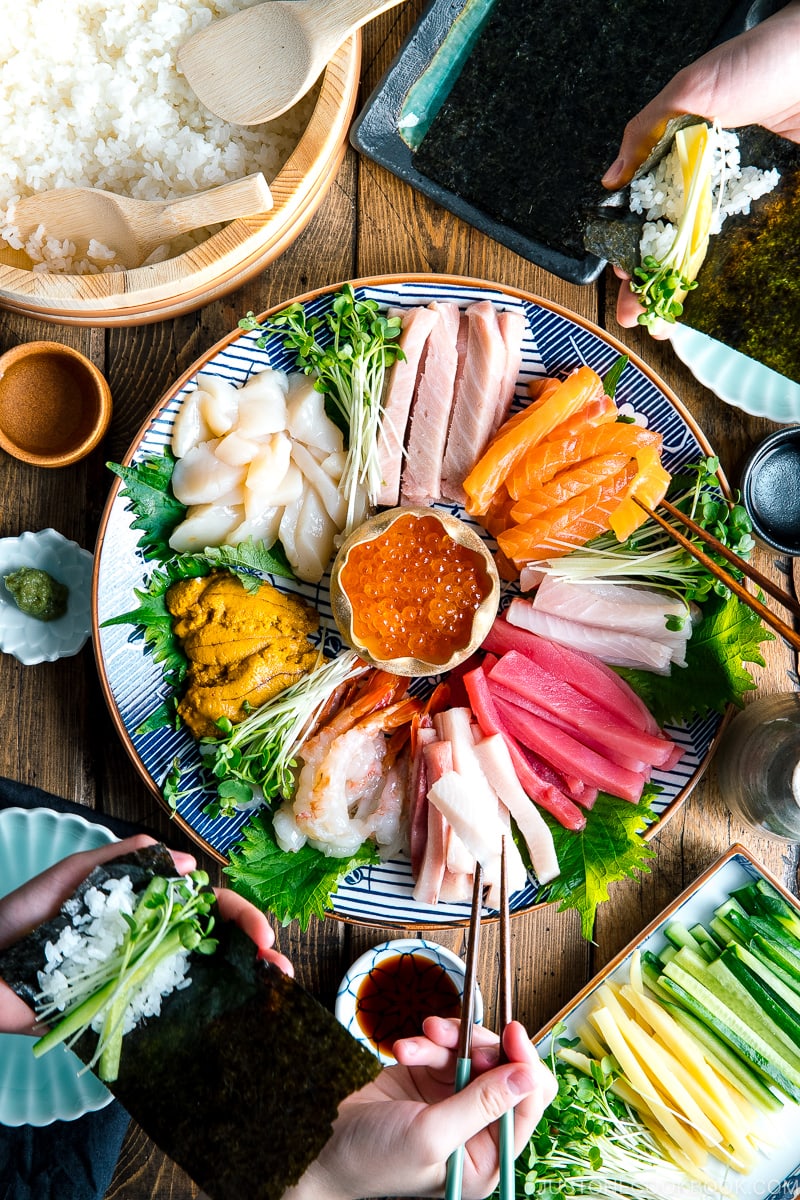 How to Make Perfect Sushi Rice
How to Make Perfect Sushi Rice
Ingredients You’ll Need
- Japanese short grain rice
- Kombu (kelp) — Optional, but highly recommended! It’s the top secret for achieving best aromatic sushi rice.
- Rice vinegar
- Sugar
- Salt
Overview: Cooking Step
- Cook rice with kombu using your preferred cooking method.
- Make sushi vinegar (seasoning).
- Transfer cooked rice to a baking sheet lined with parchment paper or a sushi oke or hangiri (traditional method).
- Season the rice with sushi vinegar then mix with a rice paddle (slicing motion!)
- Cover with a damp towel and ready to use.
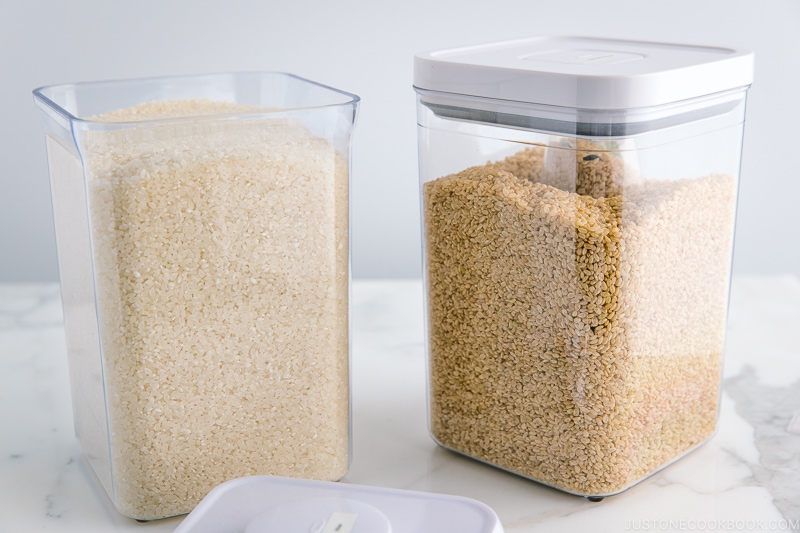 How Much Rice Do We Need to Cook?
How Much Rice Do We Need to Cook?
📝 One sushi roll requires 90-135 g or ½-¾ US cup of sushi rice.
You can divide the number of servings you need in half to figure out how many rice cooker cups of Japanese short-grain white rice to cook:
1 rice cooker cup (180 ml, ¾ US cup, 150 g) of uncooked rice yields roughly 2 servings (1¾ US cups, 330 g) of cooked rice. This is enough for 2 Japanese rice bowls (typically 150 g each) or 3 onigiri rice balls (typically 110 g each). 1 US cup of cooked rice weighs 6.3 oz (180 g).
1½ rice cooker cups (270 ml, 1⅛ US cups, 225 g) yield roughly 3 servings (2¾ US cups, 495 g) of cooked rice.
2 rice cooker cups (360 ml, 1½ US cups, 300 g) yield roughly 4 servings (3⅔ US cups, 660 g) of cooked rice.
3 rice cooker cups (540 ml, 2¼ US cups, 450 g) yield roughly 6 servings (5½ US cups, 990 g) of cooked rice.
4 rice cooker cups (720 ml, 3 US cups, 600 g) yield roughly 8 servings (7⅓ US cups, 1320 g) of cooked rice.
5 rice cooker cups (900 ml, 3¾ US cups, 750 g) yield roughly 10 servings (9⅙ US cups, 1650 g) of cooked rice.
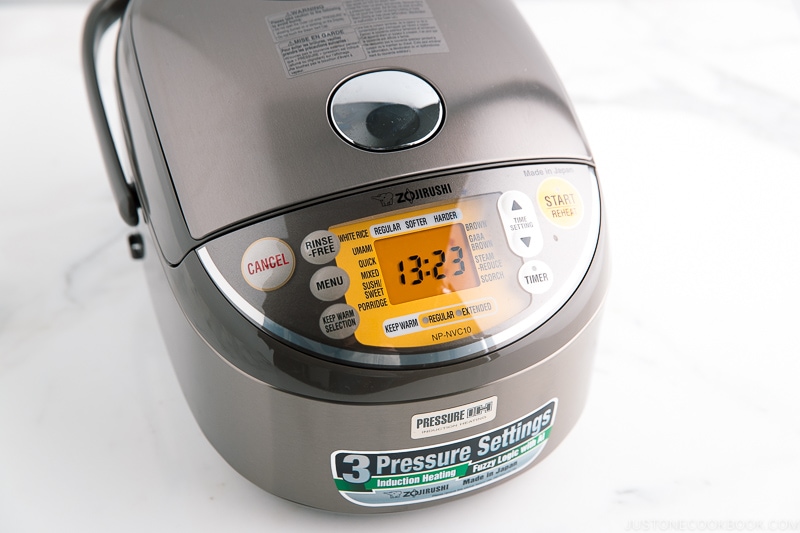 Rice Cooking Tools
Rice Cooking Tools
You can cook the rice using a pot over the stove, but the most convenient way is to cook sushi rice using an electric rice cooker. In my Japanese home kitchen, my trusted rice cooker brand is Zojirushi Rice Cooker. Because I cook sushi rice often, this rice cooker has a ‘sushi’ option, which makes it really easy to ensure the rice is cooked perfectly. Here are my recipes for different cooking options.
How to Know if Your Rice is Perfectly Cooked?
After the rice is steamed, the rice should be shiny and plump. The texture should be fluffy with a firm bite. And each rice grain should be sticky yet retain its shape. Mushy rice means it has too much water or it is overcooked. If the rice is fresh, you will see a nice shiny gloss on the surface of each grain.
There you have it — the basics of making rice perfectly! Once you get the rice right, you’ll be ready to season the rice to make sushi rice. Don’t forget to check out some delicious sushi recipes for inspiration.
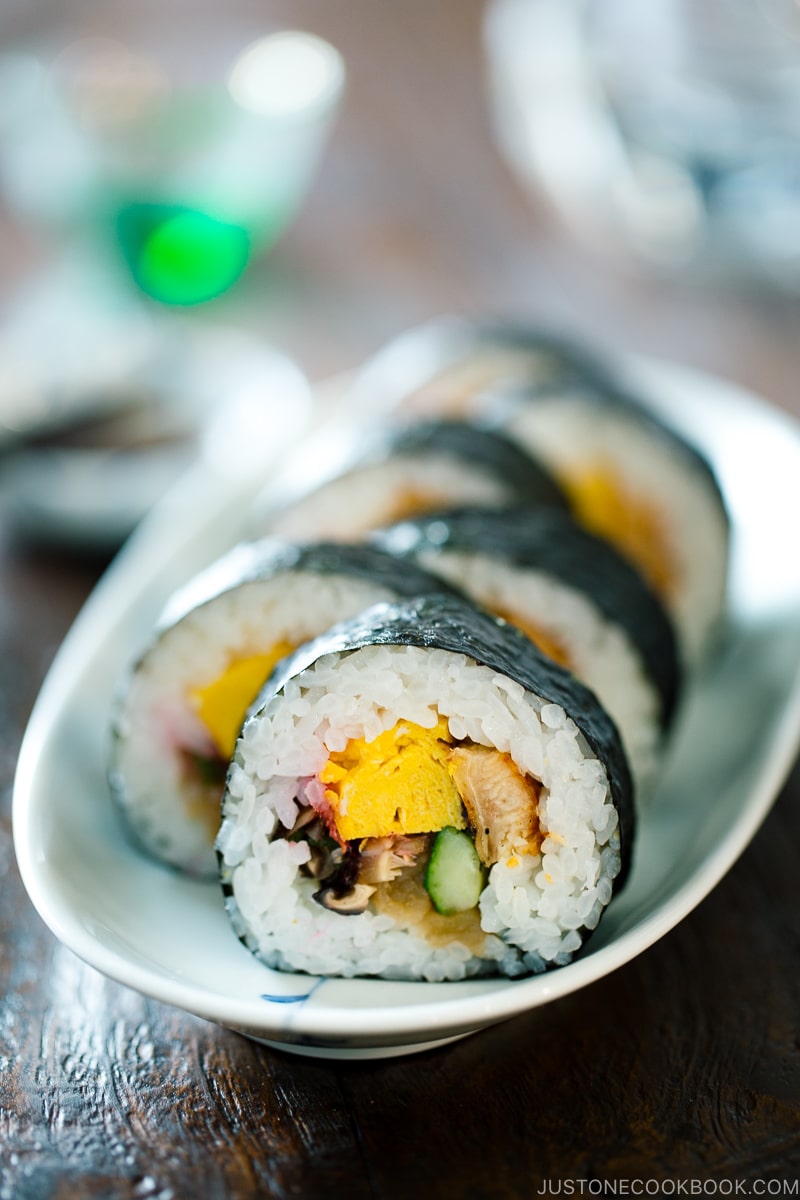 Cooking Tips for Sushi Rice
Cooking Tips for Sushi Rice
Tip #1. Choose the right kind of rice
To achieve an authentic Japanese standard, you want to use only short-grain Japanese rice to make sushi rice. This is because the consistency and flavor of Japanese rice are very different from long-grain rice, jasmine rice, or other types of rice. With a higher content of moisture, Japanese rice is characterized by its unique stickiness and texture, which attributes to the toothsome bite of authentic sushi.
There are various Japanese rice brands available in the market. Some of my favorite ‘first grade’ brands for Japanese rice include Koshihikari from Toyama Prefecture, Japan, or Koshihikari from California (see my Pantry page).
Tip #2. Rinse and soak the rice before cooking
Make sure the rice is washed and rinsed a few times until no more starch comes out from the water. Then let the rice be soaked for at least 30 minutes before cooking. This allows the rice grains to yield a better texture.
Tip #3. Cook the rice with kombu
This is not a must, but definitely one of the top secrets for aromatic sushi rice. Kombu (dried kelp) is used extensively in Japanese cooking for its many benefits. I often add kombu when I cook sushi rice. It’s up to you, but I like the subtle fragrance and umami taste of kombu-infused rice.
Tip #4. Water should be less than the usual amount
Because we add sushi vinegar (the combination of rice vinegar, sugar, and salt) to the cooked rice, we use less water—just a tiny bit less—when you cook the rice.
Tip #5. Make homemade sushi vinegar
Sushi rice is always seasoned with sushi vinegar. It’s made of rice vinegar, sugar, and salt to achieve the balance of sweet, salty, and sour taste. You need to get mild-flavored rice vinegar, not another type of vinegar for this; otherwise, it’s too strong and the flavor is not the same.
After you combine all the ingredients in a bowl, heat up in a microwave or in a pot over the stovetop so the sugar is fully dissolved.
If you want to save time, you can use a bottle of seasoned vinegar, or what we call sushizu (すし酢, sushi vinegar).
Tip #6. Add sushi vinegar to hot rice and let cool immediately
First, you will need to transfer the cooked rice to a big bowl (sushi oke or hangiri or salad bowl—make sure to moisten the surface so the rice won’t stick) or a baking sheet lined with parchment paper. The reason is that you need to let the rice cool fast. In Japan, we use an electric fan or hand-held fan called uchiwa (うちわ) to cool the rice.
Second, you need to pour sushi vinegar over the hot rice. Don’t wait until the rice is warm or cool. As soon as the rice is taken out of the rice bowl, you have to drizzle rice vinegar all over the rice.
Finally, using a rice paddle, mix the rice in a slicing motion. This is so important so the sushi rice won’t become mushy or smashed.
With proper fanning and slicing, your sushi rice becomes cool and shiny.
Tip #7. Cover with a damp towel
Don’t leave the sushi rice in a bowl/tray after you’re done mixing. Make sure it’s covered with a damp towel and keep it at room temp until you’re ready to make sushi.
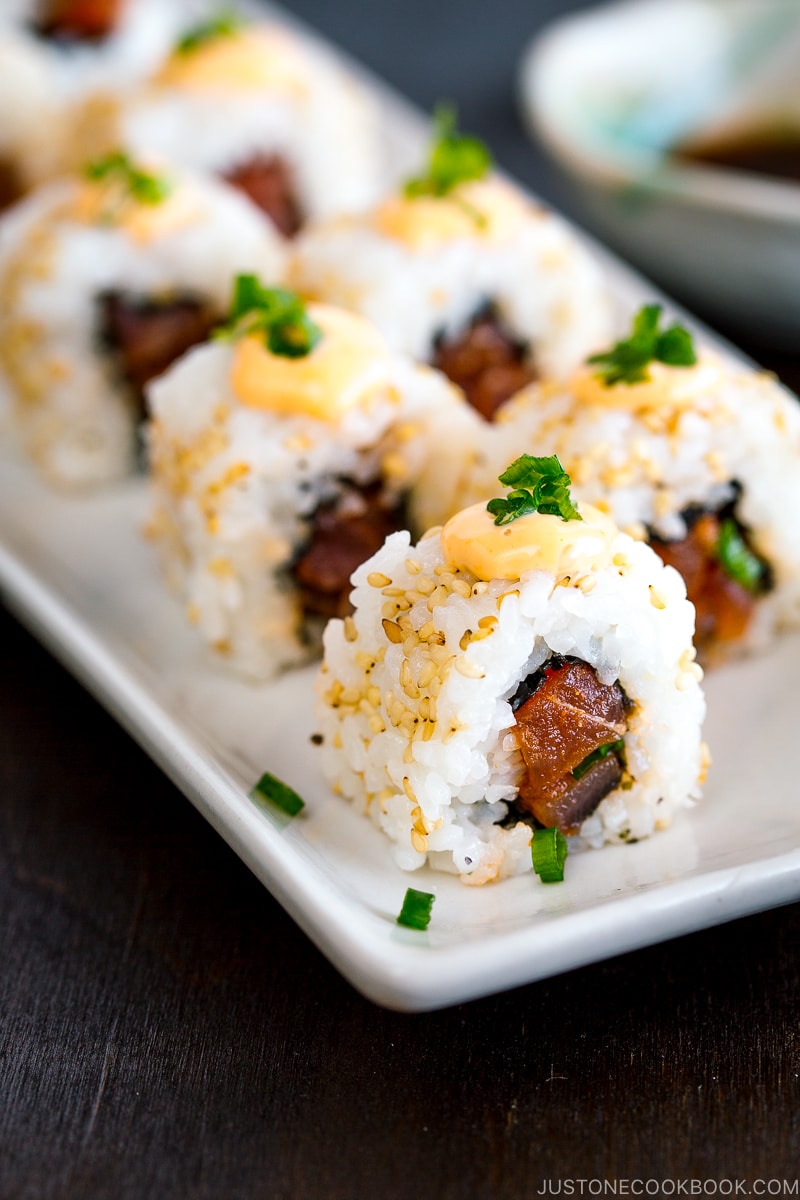 Delicious Sushi Recipes
Delicious Sushi Recipes
Now with the perfectly cooked sushi rice, you can make all kinds of sushi recipes! If you are interested in learning more, check out my post Learning at Sushi Skills Seminar in San Francisco. Enjoy!
- California Roll
- Dragon Roll
- Spicy Tuna Roll
- Yellowtail Tuna Roll (Negihama Maki)
- Hosomaki (Thin Sushi Roll)
- Futomaki (Thick Sushi Roll)
- Chirashi Sushi
- Saba Oshizushi (Mackerel Pressed Sushi)
- Inari Sushi
- Temaki Sushi (Hand Roll)
- Temari Sushi
- Mosaic Sushi
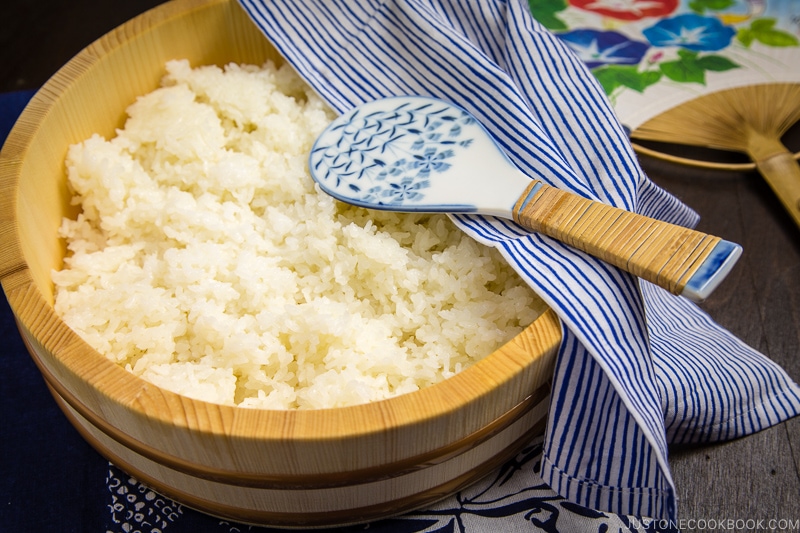
Wish to learn more about Japanese cooking? Sign up for our free newsletter to receive cooking tips & recipe updates! And stay in touch with me on Facebook, Pinterest, YouTube, and Instagram.
Source: https://www.justonecookbook.com








